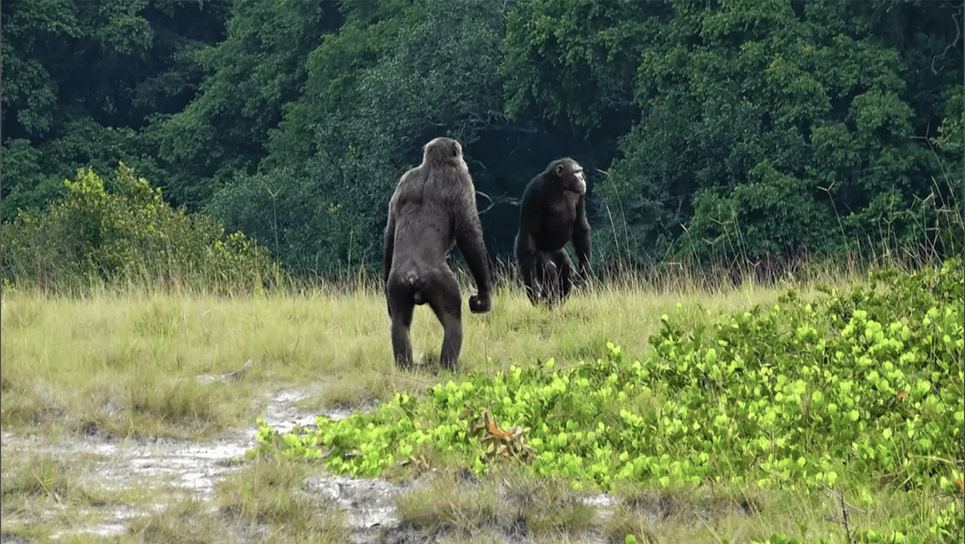It’s the first time this type of distressing behavior has been seen among great apes.

Both chimpanzees and gorillas are known to be capable of great violence. But generally, their violent behavior is directed towards members of their own species during internal feuds for territory, resources, and mating rights. This is why recent reports of two fatal fights between chimps and gorillas at Loango National Park in Gabon have had scientists concerned. It’s the first time an inter-great-ape killing has been documented.
“Our observations provide the first evidence that the presence of chimpanzees can have a lethal impact on gorillas. We now want to investigate the factors triggering these surprisingly aggressive interactions,” says Tobias Deschner, a primatologist at the Max Planck Institute for Evolutionary Anthropology.
War of the apes
Researchers with the Loango Chimpanzee Project have been monitoring apes living in the park since 2005. The aim of this research project is to investigate tool use, hunting behavior, territoriality, communication, and diseases to gain a better understanding of the behavioral diversity and complexity in chimpanzees (Pan troglodytes troglodytes).
Between 2014 and 2018, the researchers observed nine episodes in which chimps and gorillas interacted. That's nothing out of the ordinary as these types of encounters are quite common in eastern and central Africa.
Up until recently, all chimp-gorilla encounters observed by researchers were peaceful and sometimes even playful. Imagine their surprise when, in 2019, they witnessed not one but two violent clashes between these apes, each leading to deaths.
In both instances, the male chimps ganged up on gorillas at the outer edge of the chimps' territory. Although gorillas are enormously stronger than chimps, they were heavily outnumbered in both instances. Researchers happened to be only 30 meters (100 ft) away when the violence erupted, which made these episodes even more harrowing.
"At first, we only noticed screams of chimpanzees and thought we were observing a typical encounter between individuals of neighboring chimpanzee communities. But then, we heard chest beats, a display characteristic for gorillas, and realized that the chimpanzees had encountered a group of five gorillas," said Lara M. Southern, Ph.D. student and first author of the study, recalling one of the lethal clashes from 2019.
Interspecies battles
The fights lasted between 50 and 80 minutes. The chimps formed coalitions of more than two dozen members and attacked two families of gorillas. Although two silverbacks (the leaders of the group) and the females resisted and fought back, two gorilla infants were separated from their mothers during the chaos and were killed. Several chimps were injured in battle, including a severe injury incurred by an adolescent female, but there was no fatality on their side.
The aggressive chimps acted in coordination, working together to isolate the weakest members of the gorilla groups. This is how they ultimately were able to separate the baby gorillas from their mothers.
These concerning events are clearly atypical and may be the result of dwindling shared resources. Fruit availability has been relatively low in tropical forests in Gabon in recent years, which may be due to climate change. If this turns out to be indeed the case, then we can add inter-ape warfare to the ignoble list of environmental damage caused by human activity.
"We are only at the beginning to understand the effects of competition on interactions between the two great ape species in Loango," says Simone Pika. "Our study shows that there is still a lot to explore and discover about our closest living relatives, and that Loango National Park with its unique mosaic habitat is a unique place to do so."
The distressing clashes between the apes were described in a study that appeared this week in the journal Scientific Reports.


